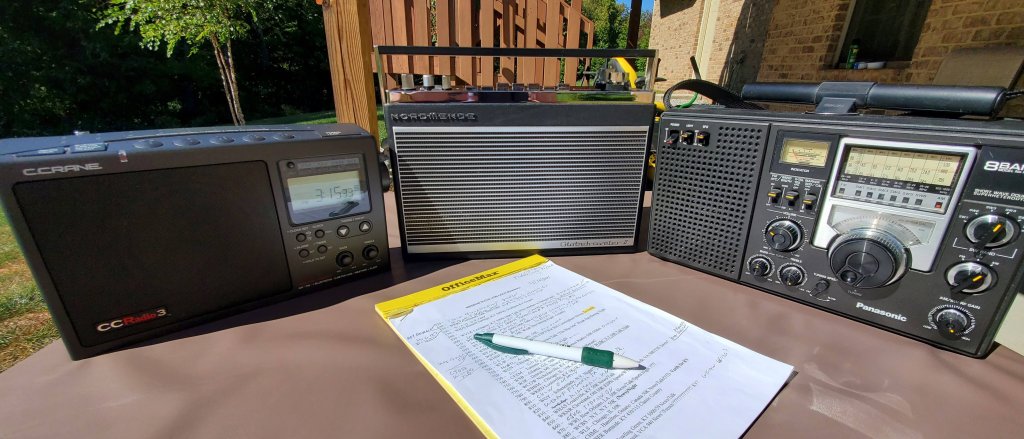How I Test Radios
Primary testing is done midday when signals are weakest and most stable.
It is necessary to use a location with low background noise because if the noise becomes the limiting factor on weak signal reception you can’t tell the differences between radios reliably. I have fairly low noise in parts of my house and I can tell most of the differences there but when I go out into the yard with NO noise the differences become more obvious on some signals. My location has a few strong signals but most are semi-local to distant.

Above: Three Hot Radios (They must be moved and rotated for each station)
It is necessary to test radios at the same time, side by side to discern minor differences…memory does not allow just listening to a radio by itself and judging how good it is and reception varies from time to time. Yes, there are some benchmark signals I am familiar with and a quick listen tells me approximately how good a radio is but side by side, simultaneous comparisons are far more revealing of smaller differences.
It is necessary to use as many frequencies as possible, I use a legal pad and write down the results of 2 to 4 radios on every receivable frequency. Doing this I can see that almost always one radio may be better or worse on specific frequencies but the reverse may be true on other stations. By tabulating the results of, perhaps 30 stations, clear trends develop. More often than not one radio will beat another on a given station but then on another station the other one will be best. This happens all the time and is the rule rather than the reception.
It is necessary to shift the positions of the radios because sometimes one spot favors a signal and reversing the positions of two radios may reveal that one spot is better than the other on a given signal. This is true on all bands but especially so on FM where moving a radio or antenna few inches can make a signal come or go completely. On FM I can often receive two or even three signals on a given frequency by moving the radios around.
On AM I use frequencies near the threshold of audibility and stronger signals that reveal how hissy the radio is on weak to medium signals. One radio may hear a faint trace of signal that another one can’t hear but on slightly stronger signals the other one may have lower background noise. This sensitivity or quieting curve is important to be aware of and is one of the reasons I use as many stations as possible.
On FM I judge not only how many signals the radio can receive but how finicky of antenna aiming they are…a better radio will provide a stable signal while another one may match that but only with critical antenna aiming. Also, if multiple signals are on a given frequency some radios will hear all of them, other radios may not.
I then do further tests at night or with external antennas to judge other aspects of performance such as overload resistance and AGC characteristics, but overall the midday tests are usually the most revealing.
The way I test radios takes lots of time and experience but I find that my results are generally reliable and repeatable.
You must be logged in to post a comment.